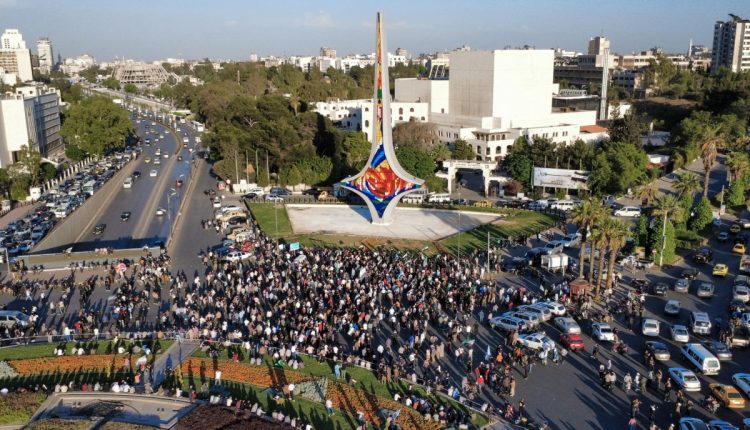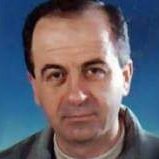1920 – 2025: The declining quality of politics in Syria
By Mohammad Sayed Rassas
Syria, as a geographical-political entity that emerged within a political framework lasting four months in 1920, was the most prolific in generating political ideas from which political currents and parties in the region extending from Morocco to Iraq emerged. These ranged from Pan-Arab thought with its founders: Sati’ al-Husri, Michel Aflaq, and Kstantine Zureiq, to the idea of Islamic fundamentalism, which Hassan al-Banna took from the Syrian General Conference President Sheikh Rachid Rida, and to the idea of Salafism, brought by Damascenes Moubarek al-Din al-Khattab and Nasser al-Din Al-Albani. Then there is the idea of Salafist activism or the “Revivalist” (Al-Sururi) current, represented by Muhammad Surur Zain Al-Abidin (from Horan), which blends the ideas of Muhammad ibn Abd al-Wahhab and Sayyid Qutb. From the Sururi movement, Abou Musab al-Suri (Mustafa Satem Maryam Nassar) took the seed for producing Salafi-Jihadism. Also, from Syrians Elias Mardas and Yasin al-Hafiz, the idea of integrating Marxism with local reality was born, similar to Chinese Communists who argued for “Chinesing” Marxism.
On the other hand, it can be said that Syrian politics produced major figures such as Saadallah al-Jabri, Rushdi al-Kikhia, Fares al-Khouri, Khalid al-Azm, Ma’ruf al-Dawalibi, Mustafa al-Siba’i, Akrum al-Hourani, Hani al-Hindi, Khalid Bakdash. From Damascus, the Iraqi Ba’athist organization and the Arab Baath Movement branches were managed. Bakdash had followers among Iraqi communists like Abdelqader Ismail al-Bustani, as well as Jordanians like Fuhumi al-Salafiti, and Lebanese after the 1964 separation of the Lebanese Communist Party, such as Hassan Qraytoum, Sawaia Sawaia, and the Maronite Nakhla. Practically, Syrian political life is considered the most distinctive among the Egyptian and Sudanese ones.
However, if we classify Syrian political life into phases—1946-1958, 1963-1982, 2000-2011, then 2011-2024, and finally after December 8, 2023—there is a cumulative decline in the level of politics in these five phases, with each subsequent phase weaker than the previous. Concurrently, this decline is reflected in the academic teaching body in the Faculty of Law. For example, the level of professors in the 1950s, such as Munir al-‘Ajlani, Rizq Allah Antaki, Ma’ruf al-Dawalibi, Mustafa al-Siba’i, and Mustafa al-Zarqa, can be compared to the level of law faculty professors in the 1990s. The same applies to the philosophy department at the University of Damascus—its level in the 1970s compared to its state under Bashar Assad. Similar comparisons can be made across various cultural fields.
When Riyad al-Turk launched the phrase “Kingdom of Silence” after his release from prison in 1998 to describe Hafez al-Assad’s Syria, he was probably referring to the Syrian political desertification after the Hama massacre of 1982, which pushed the majority of Syrians into submission before the dictator. However, he likely did not realize that the absence of politics had made politicians, who returned to the political scene after the death of the dictator, resemble football players who come onto the field after a long absence, appearing to have lost much of their former skills. When a vision was presented for the new phase, most opposition figures rushed to follow the phrase of the conflict between reformers and the old guard in the new era—a phrase first coined by Michel Kilo in four articles published in the Lebanese newspaper “An-Nahar” in late August 2000. All opposition leaders then followed this idea, except for Turk. When asked about Bashar Assad as a reformist, supporters answered that his inaugural speech suggested that or they said they could not work “without hitting only under this ceiling” or “let’s sow discord inside the authority.” Even when Turk, Riyad Safaf and eight others were arrested in September 2001, the newspaper “Al-Ra’i,” the organ of the Communist Party (Political Bureau), considered the arrests “a blow from the conservative wing against the reformist wing,” not just against the opposition. This was echoed by another oppositionist in the “An-Nahar” supplement supervised by Elias Khoury. I personally met Riyad Turk with Michel Kilo at his home in Damascus in March 2001. When it was suggested to him that the phrase “civil society” used by the “Commissions to Revive Civil Society,” which issued the “Letter of the Thousand,” was ambiguous and that it was better to use the term “Reviving Democracy,” everyone was surprised to learn that he did not understand the philosophical meaning of “civil society,” despite being the spiritual father of those committees. He intended to use it as an anti-dictatorship term or thought it was so. In this context, one can compare what the “Alliance” presented in their 1980 statement, which pointed out that the dictatorship after the Ba’ath Party seized power in 1963 produced a general national crisis, and that the solution was a “National Democratic” one aimed at saving the country from its democratic crisis. They called for radical change, presenting a program and demands, and even saw themselves as a third line during the clash between the regime and Islamists, despite tactical silence about Islamist violence. After Hafez Assad’s era, the program was built on the “meaning of the other,” whom they assumed to be “reformist,” then most who bet on Bashar relied on external intervention after Saddam Hussein’s fall (including Riyad Turk) assuming that the Americans would complete what they did in Baghdad in Damascus, even though Washington was explicit in wanting to “change the behavior of the regime, not to change the regime.” Also, the strategy of building politics based on the “meaning of the American other” failed again, after its previous failure with the “meaning of the reformist current inside the palace.”
In the 2011-2024 phase, many opposition figures committed major mistakes, such as during the “Friday of International Protection” shortly after U.S. President Barack Obama’s August 18, 2011, statement that “it’s time for the Syrian president to go.” They bet on opposition violence to overthrow the regime even after Moscow’s veto in the Security Council against a resolution concerning Syria, a month and a half after Obama’s statement. They failed to realize that the US-Russian confrontation would prevent a repeat of the Libya experience, where Gaddafi was forced to flee Tripoli after five days from Obama’s statement about Syria and seven months after the Washington-Moscow meeting against him in the Security Council. This all reflected the opposition’s inability to read the Syrian landscape after March 2011, with its regional and international repercussions. The same is true after Bashar’s fall, as those working in politics cannot interpret the regime’s fall before five months—let alone in 2015 when it was weaker than in 2024. Most likely, even after ten years from the Spring-Summer of 2015, they cannot explain the unprecedented phenomenon of how Ankara and Riyadh, then dissatisfied with the Iran nuclear deal, united to support “Jaysh al-Fath” and “Jaysh al-Islam,” which led to the control of Idlib province, the Ghab area, and the opposition’s near-control of Hama and Homs, including cutting the Damascus-Homs highway at Adra. Later, Qassem Soleimani, Vladimir Putin, and Barack Obama met to discuss saving Bashar Assad via Russian intervention. Most probably, those who speak of “liberation” and “victory” do not understand that the Syrian regime did not fall solely due to internal factors but because the US-Russian divergence after the Ukraine war and Washington’s changed view of Iran after the 2023 Hamas attack are what brought down Bashar’s regime, in cooperation with Ankara and through Syrian implementation, to shift the balance of power in favor of Washington against Moscow before Ukraine negotiations and against Tehran before nuclear negotiations. Here, Israeli strikes on Syrian military sites in the days following Assad’s fall can be seen as expressions of the US-Israeli disagreement over the Syrian event, a matter that has become clearer since the last meeting of Israeli Prime Minister Benjamin Netanyahu with US President Donald Trump last month at the White House.
In conclusion, can the US’s eight demands from the new Syrian authority be viewed as a set of conditions or a roadmap for Damascus after Assad’s fall, especially since they were presented in March, shortly after the military movement carried out by remnants of the previous regime? And, consequently, can the surrender of the Middle East by Washington to Iran and Russia in 2015 be interpreted as Obama’s desire to focus on East Asia regarding China? Does the shift in Washington’s perspective toward the Middle East and its importance solve the Syrian puzzle of December 2023, considering that “those who lead the Middle East must control Syria”?




Comments are closed.